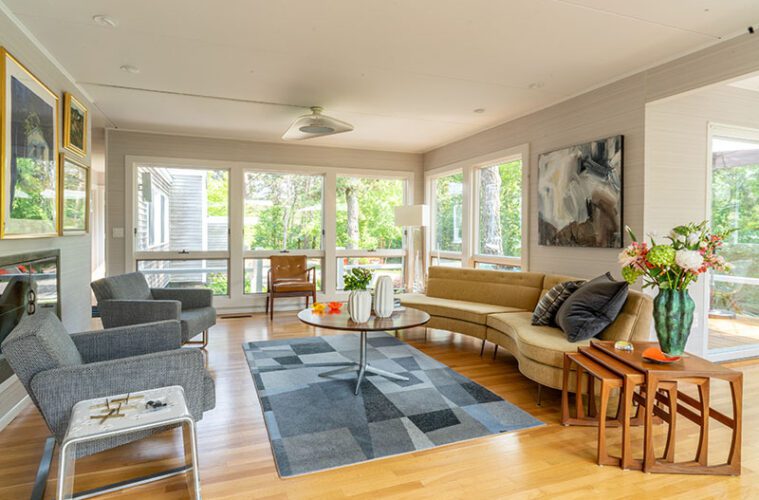“The thing about living with a genius is that I get no credit whatsoever,” Rick Miller says with a laugh. “When people walk into our home, they say, ‘You’re so lucky to live with Oren,’ as if I have no taste.”
Oren is Oren Sherman, an artist, a Rhode Island School of Design professor, and a design specialist at Elkus Manfredi Architects, a high-profile commercial architecture firm in Boston. Miller, a psychotherapist and the founder of the nonprofit organization Gay Sons and Mothers, is his husband. The couple, who met as young men in Provincetown, Massachusetts, have been together for 30 years. As Sherman points out, Miller has been exposed to a lot of design. “The truth is, the house is very much a combination of the two of us,” Sherman says.


The couple are the second owners of this 1,600-square-foot midcentury modern house in Truro, a tiny town on Cape Cod. They are intent on respecting its modernist roots. When erected in 1957, it was about 800 square feet; the original owners eventually enclosed the screened porch (now the dining room) and added the primary bedroom. “It was built as a modest summer home; we didn’t want to turn it into a fancy house,” Sherman says. Still, there was room for improvement.
They invited their friend Thomas Henry Egan III, a principal in Evolve Residential, to have a look. Egan defined a proper entry, redesigned the galley kitchen, and enlarged the windows to enhance the indoor-outdoor connection. Waking up surrounded by greenery and gazing into woods bathed in late afternoon light are among the greatest rewards of living here. “In four minutes, Tom told us what we needed,” Miller says. “His advice made this place what it is.”
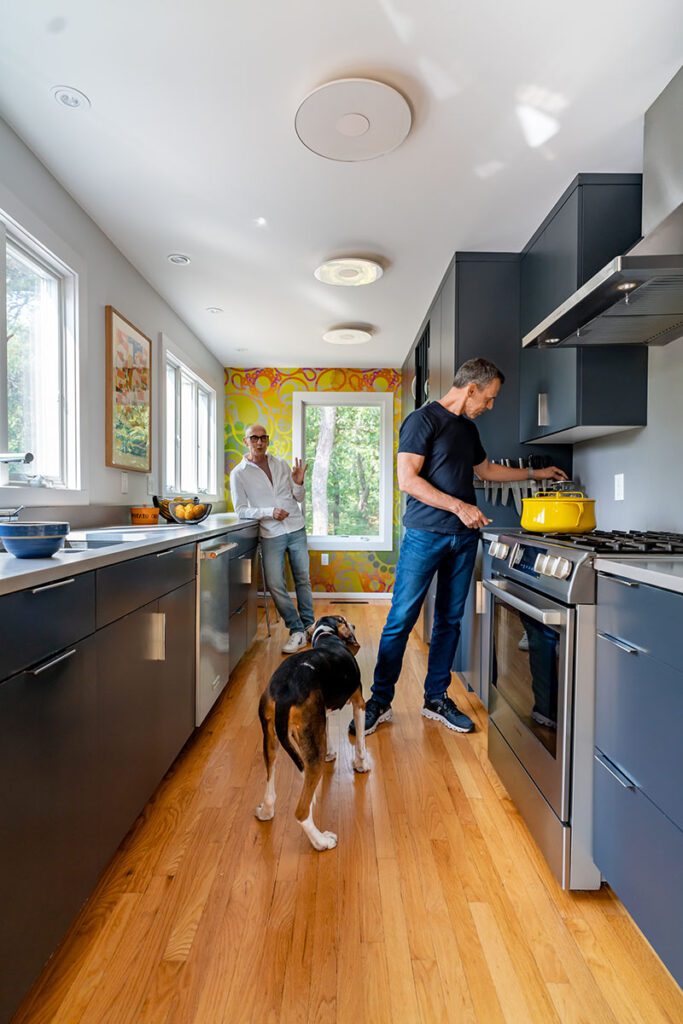

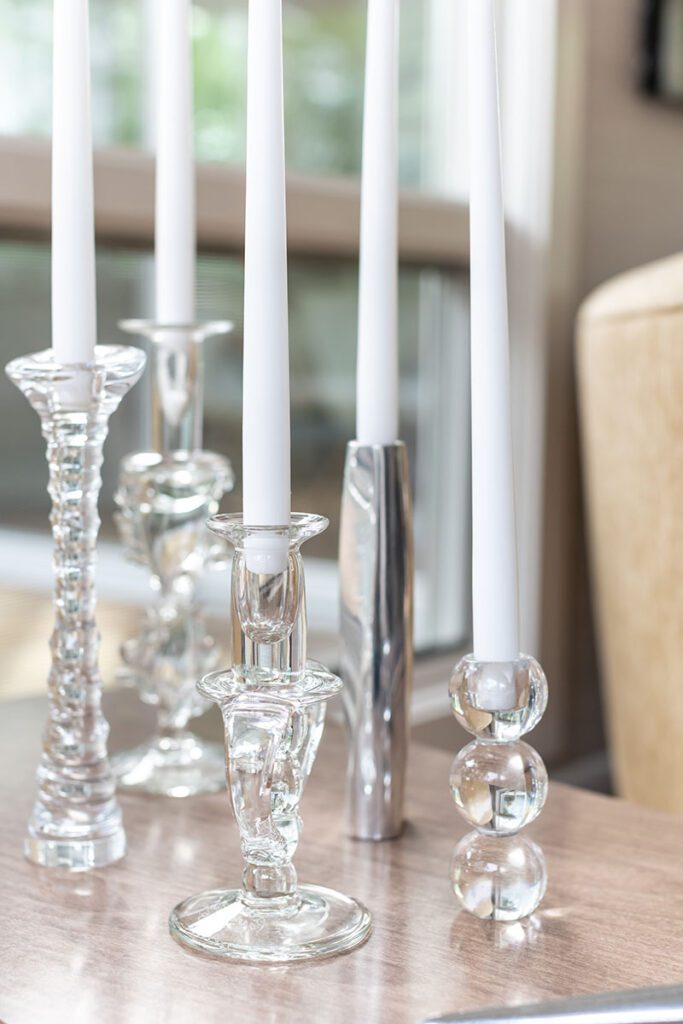



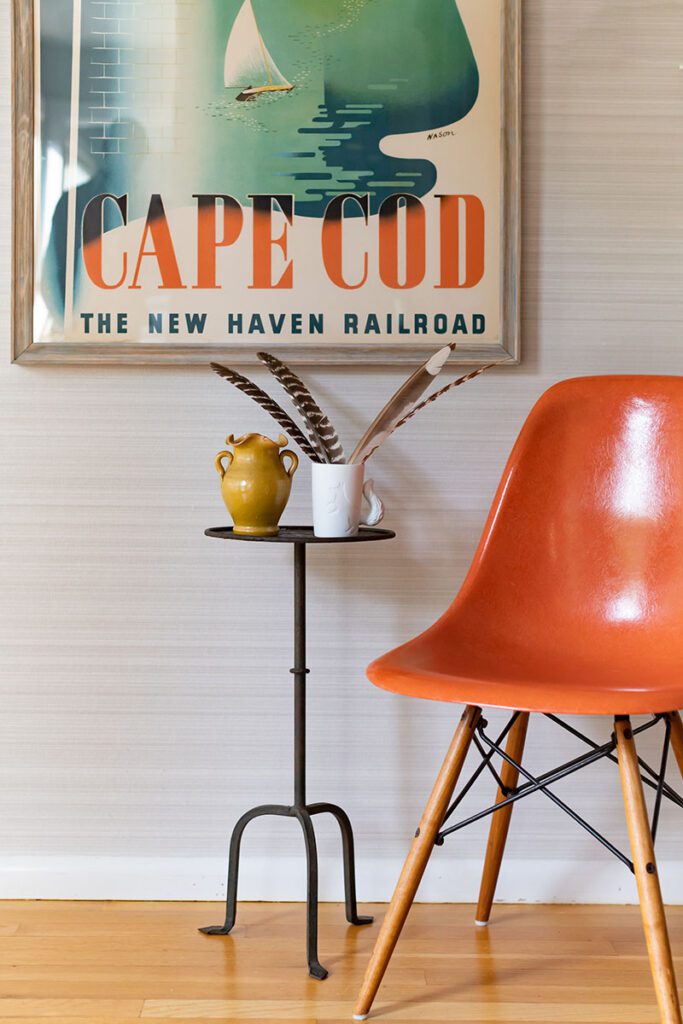

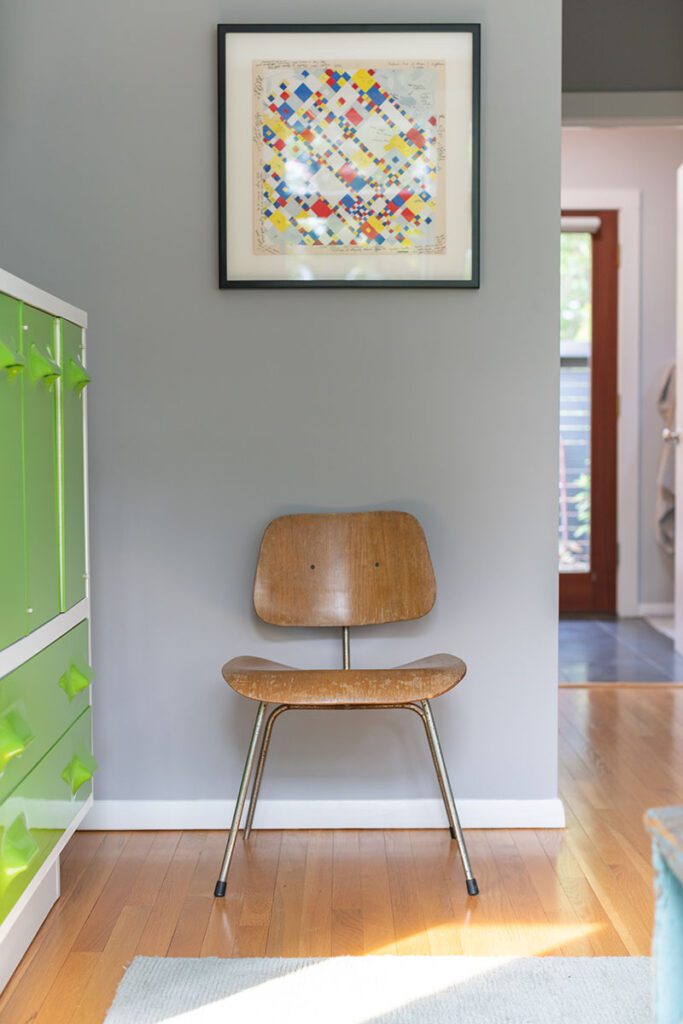

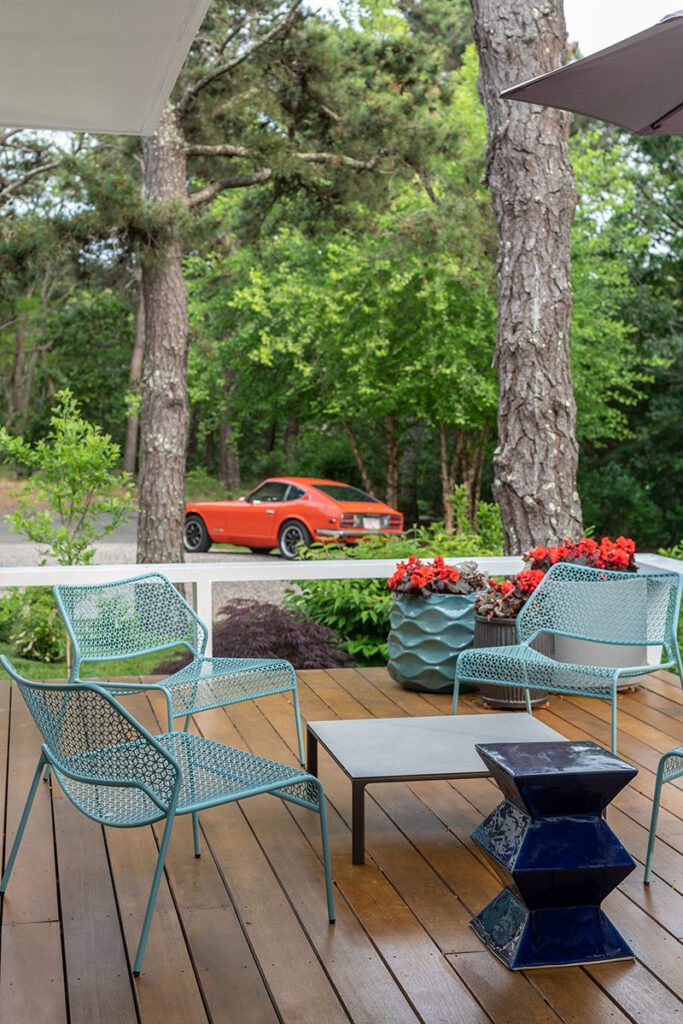



Sherman’s creations don’t hurt either. His wallpaper patterns, manufactured by Astec Wallcoverings, grace the kitchen (exploded paisley) and bedroom (a metallic faux bois) and will soon go up in the office bath. “It’s a mylar wallpaper like the kind I used to help my mother put up in her friends’ houses,” Miller says, amused. A geometric rug design of Sherman’s, manufactured by Brintons, the British company that supplies carpets for Buckingham Palace, adds pattern in the living room.
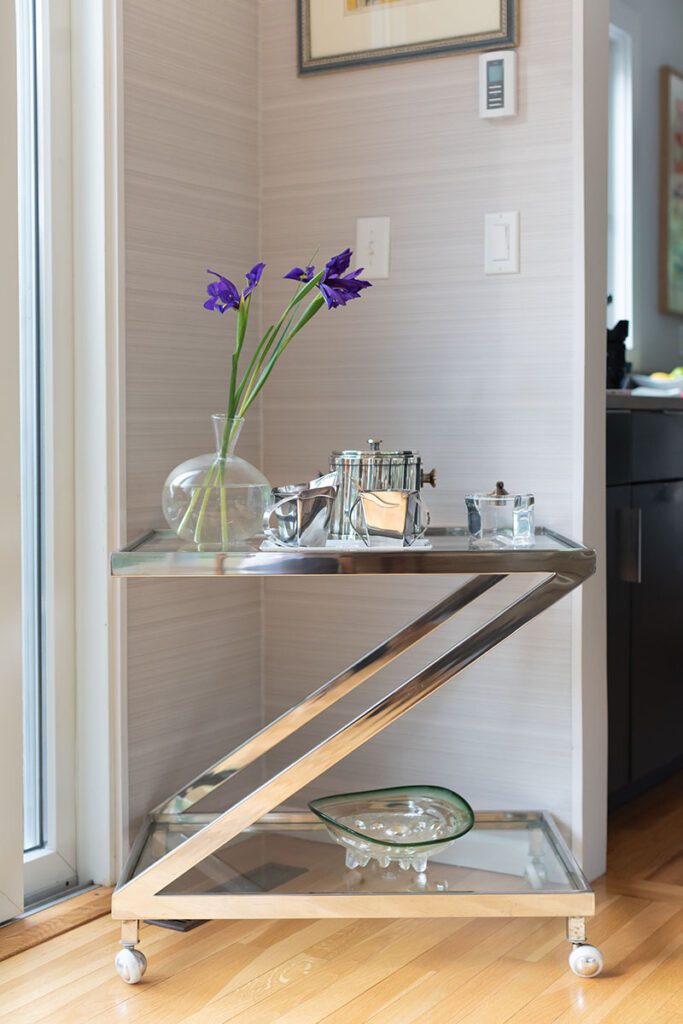

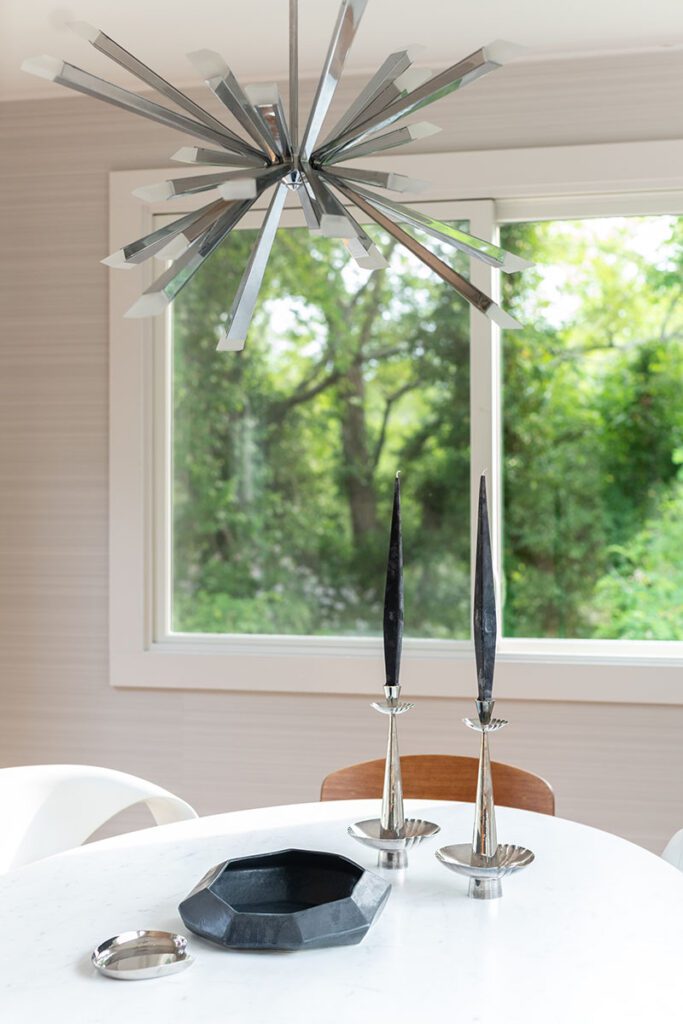

And then there’s Sherman’s fine artwork, along with works by local artists, friends, and colleagues. A print of a Cape beach shack he painted hangs over the fireplace, surrounded by landscapes and streetscapes purchased at local auctions. Another of Sherman’s pieces—of a midcentury modern house in Los Angeles designed by Pierre Koenig—hangs in the bedroom. “It’s like I imagined we’d live in a modernist house someday,” he says.
Everything in the home has meaning. “We came to this house wanting it to be authentically us,” Sherman says. The last thing either wants is a self-consciously stylish place devoid of character. That the interiors tell their story, as a couple and as individuals, is important. Cherished family pieces mingle with pieces they acquired together. “A house should have a sense of history, reflect the way you live now, and hold a piece of the future,” Sherman says, expanding on a quote from prominent interior designer Charlotte Moss.
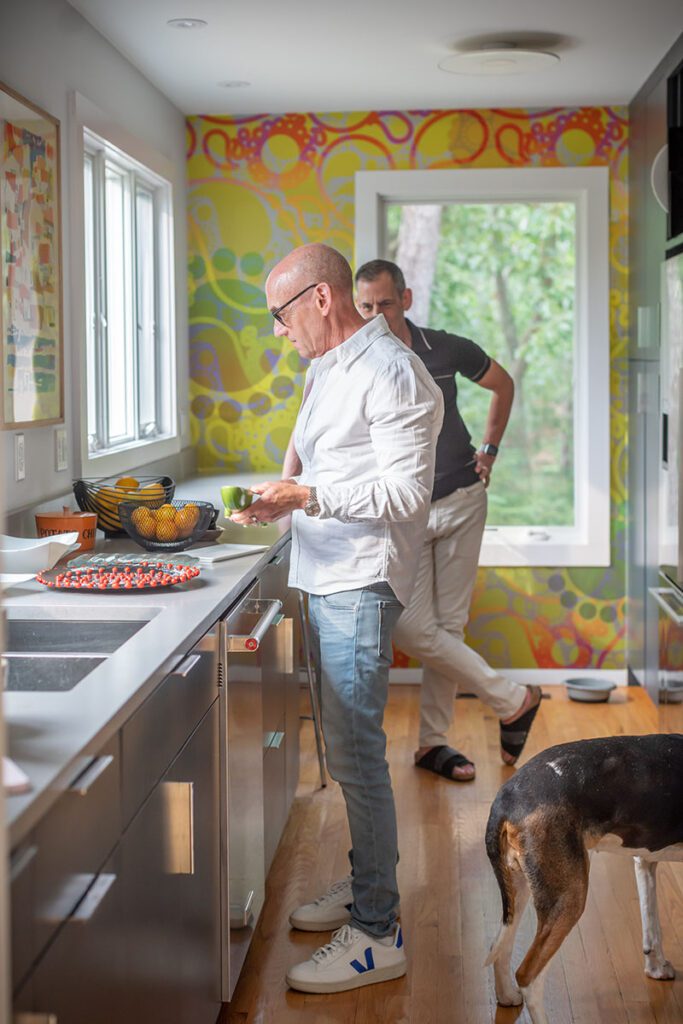

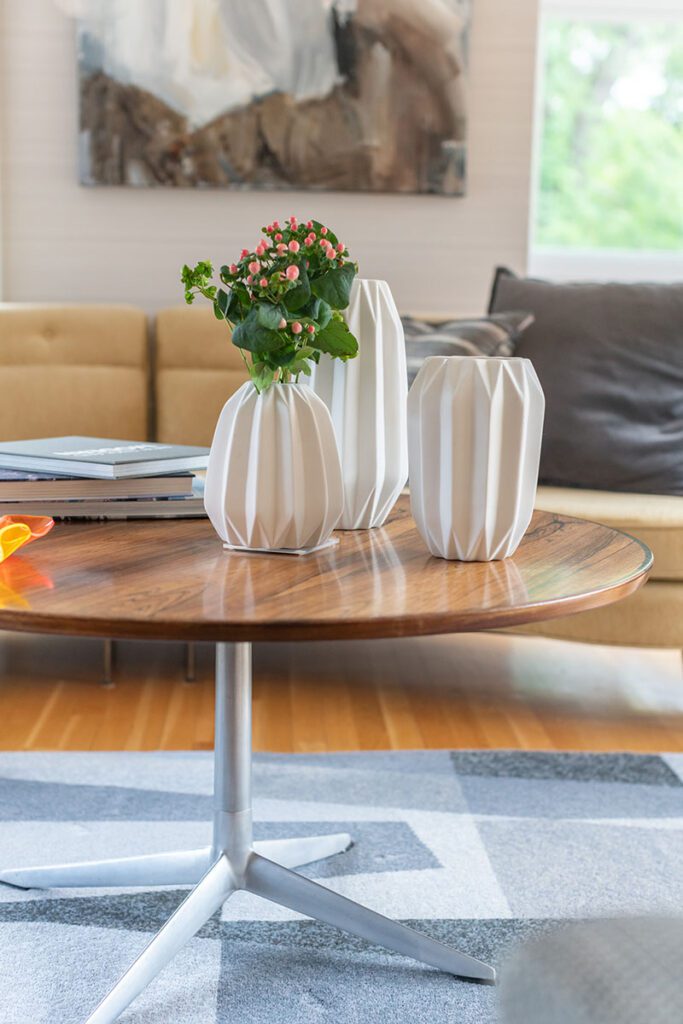

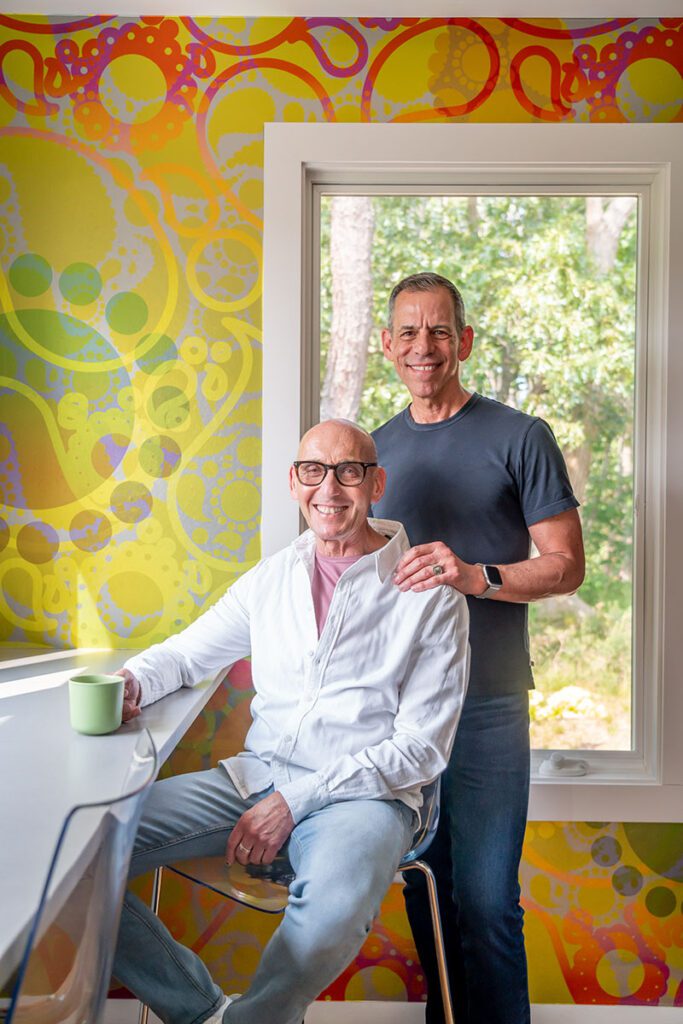

In the entry, funky midcentury pottery fills a traditional antique hutch inherited from Miller’s gay great-uncle. They use his dishes and silver, too. Sherman’s most prized possession, a Lalique bowl that was a wedding present to his parents in 1944, is displayed on the midcentury modern credenza that Miller’s mom found. “I normally say that if something gets broken, don’t cry over anything that can’t cry over you, but this is irreplaceable,” he says. He feels the same about the silver candlesticks that his late mother, a silversmith and landscape designer, made in the 1950s. “I coveted them my entire life,” he says.
In the living room the pair get a kick out of their curvy vintage sofa, which reminds them of sofas their Jewish grandmothers might have had and thrown out. Soon, the sofa will sport a new look: spring-green mohair. Sherman fell hard for the fabric when specifying 1,000 yards of it in deep red for seats in a theater that Elkus Manfredi is designing. “I want to be wrapped up and buried in this mohair,” he says.


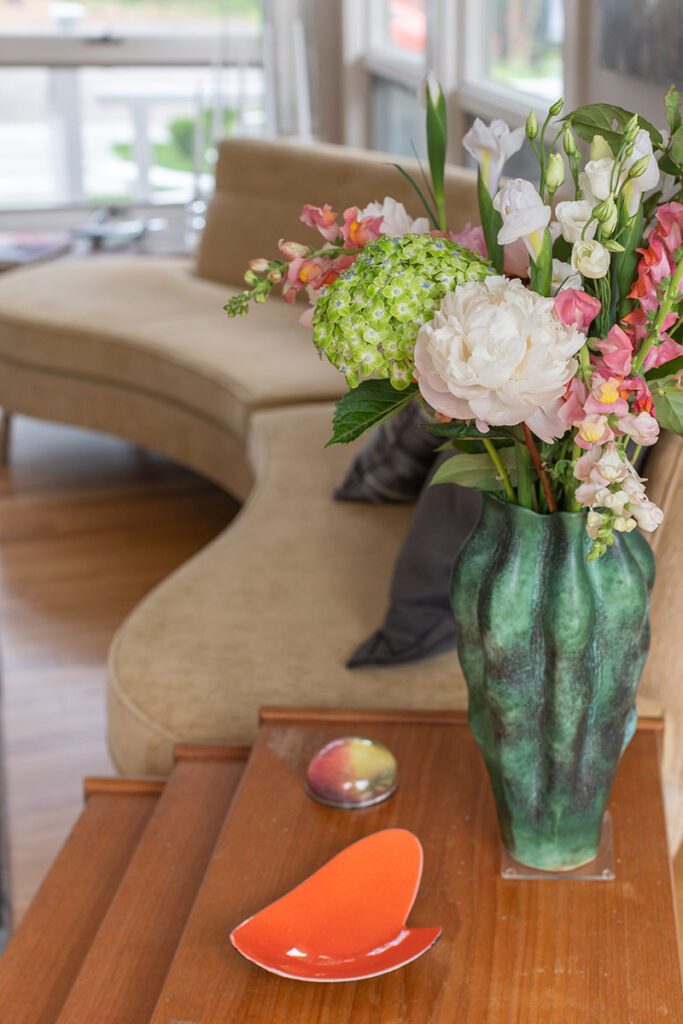

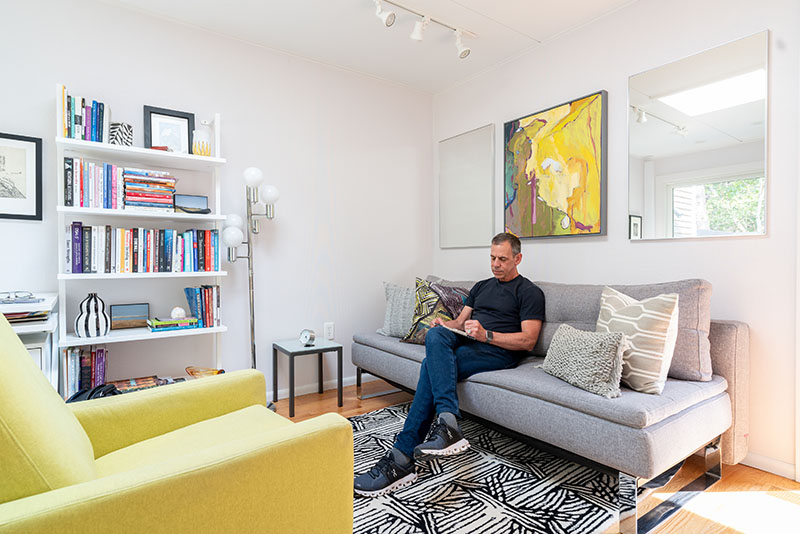

Like the sofa, the marble-topped dining table designed by Eero Saarinen for Knoll in 1956, was a splurge. “I’d loved it for 40 years, since I worked at Design Research the summer before I went to RISD,” Sherman says, referencing the legendary Harvard Square store. It was under the tutelage of owners Ben and Jane Thompson that Sherman first saw and came to appreciate Charles and Ray Eames, Marcel Breuer, and Mies van de Rohe furniture, along with Marimekko patterns and color.
“Overall, we didn’t spend a ton of money, but this home reflects our lives together and our personal histories,” Sherman says.
For more information, visit orensherman.com


